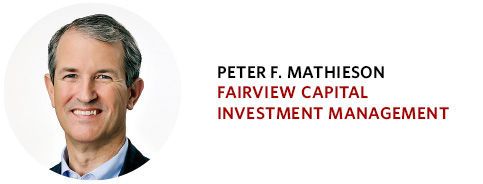Three Questions on the Markets, Part II

Each year in our Summer issue, we ask a group of the region’s leading financial experts to help our readers by responding to questions. Below are their answers to this question: Why has market volatility spiked in 2018? Do you expect markets to remain volatile?
Why has market volatility spiked in 2018? Do you expect markets to remain volatile?

Joseph Scarpo, PWA Wealth Management
Since the Great Recession of 2009 the S&P 500 registered 10 declines of 5% or more between 2009 and 2016. That degree of volatility has historically been considered normal. During the 2016-2017 rally the market did not register a single decline of 5% or more. As we move forward in 2018 a reasonable assumption is that volatility will continue to impact the markets. Rising interest rates, a tight labor market, political tensions and uncertainty along with investor anxiety should result in wider market swings throughout the balance of 2018. For traders, wider swings are a welcome opportunity to buy or sell. For investors, the wider swings create short-term noise on the way to longer term profits. Either way, further market volatility should be expected and should not be feared.

James Armstrong, Henry H. Armstrong Associates
Market volatility refers to very short-term stock price swings—daily, hourly—that are driven by the emotions of fear and greed on the part of investors. Last year, daily stock price swings were the smallest in more than 50 years. This year, price swings have been larger. Markets and human behavior are cyclical, so it’s no surprise that volatility has not remained at 50-year lows. No one can say precisely why 2018 has begun as a volatile year. Erratic policy statements from the While House may have something to do with it, as might rising interest rates. No one knows how long markets will remain volatile, so it is best that investors not base their moves on such predictions. Instead, investors should take a long-term view and ignore short-term fluctuations.

Gregory J. Sorce, HBKS Wealth Advisors
The environment for stocks continues to be favorable. Interest rates are still low, jobs are being created, and inflation remains under control. However, two factors are causing concern, leading to a higher level of volatility in equity markets. First, strong wage data has caused fears that the U.S. Federal Reserve will hike rates more aggressively than expected to head off inflation. Second, the Trump administration’s announcement of tariffs on foreign steel led to fears that a trade war will result in a slowdown of global growth. Investors hope that this announcement is part of a negotiation tactic designed to gain better terms for the U.S. in trade deals. With stock valuations a bit lofty after the nine-year bull market, and with the uncertainty surrounding Federal Reserve rate hikes, U.S. trade policies, and geopolitical risks, the volatility in equity markets will likely continue despite solid economic data.

Alison Fox Wertz, Bill Few Associates
A better question might be “Why were markets so calm prior to 2018?” The relative calm can be attributed in large part to the Federal Reserve’s support of the economy since the financial crisis by holding interest rates artificially low. Despite the Fed’s moves towards normalizing interest rates in 2017, the markets calm remained fueled by the plausible scenario that lower corporate taxes in 2018 would continue to stimulate the economy. Now that the tax bill is in the rearview mirror and the Federal Reserve has essentially removed the training wheels, some might argue volatility is just getting back to normal.

Edward M. Gallagher III, Northwestern Mutual
Yes, we believe the markets “will remain” volatile, and this is in line with our wealth management investment strategy. One could make the case that volatility is actually healthy for the markets and is quite normal—we just haven’t experienced it in a while. The US equity market historically has corrected, on average, around 14% per year (intra-year). In addition, one year out of 5 or 6 the market will go down twice that amount. Volatility in 2018 has spiked for numerous reasons: 1) Mixed signals from the Fed regarding inflation and the direction of interest rates, 2) Trade war/tariff talk between the US and China, 3) Geo-political uncertainty and the Trump Administrations mounting legal issues, and 4) Weakness in the technology sector, which has been leading the way over the past few years—just to name a few. Put all of those issues together, along with some others, and here we are. We tend to focus on the difference between volatility and risk.

Jack Kraus, Allegheny Financial
Uncertainty is the cause of volatility in the stock market. Volatility is the range of movement up and down, even though it is often associated with the markets falling. Uncertainty about future inflation and the Fed’s response, especially considering having a new Chairmen of the Fed, brought volatility to the market in early February. The rhetoric around tariffs and trade wars unsettled the market. Now geopolitical concerns with the response to Syria have caused the latest bout of uncertainty. Volatile markets can be a friend of long-term investors. It gives them the opportunity to purchase investments that they like with temporarily depressed prices. The markets are always volatile, but the amount varies based on perceived risks.

H. Scott Cunningham, PNC Wealth Management
While it’s hard to pin point just one factor that caused volatility to spike, it is most likely attributed to investors realizing that interest rates won’t stay low forever. In addition, if companies do not meet their lofty earnings expectations for 2018, markets will most likely be due for a correction. The main thing to remember is that 2017 was an anomaly in terms of low volatility. Even with 2018 results to date, we are still currently under the 10-year average, even with 1-2% swings in the market becoming a regular occurrence. Investors should expect this level of volatility to persist or pick up, rather than returning to 2017’s lows.

David B. Ellwood, WesBanco
If we define volatility using the CBOE Volatility Index (VIX), it has spiked only in comparison to 2017, which was a period of unusually low volatility. The VIX averaged 11.1 in 2017 within a narrow range of 6.1 to 16.0. The average in the first quarter of 2018 was 17.3. Taking a look at a longer time period, the average for the past 10 years was 19.9 within a range of 9.1 to 80.9, so perhaps we are returning to a more normal level of volatility. As technology has permitted the increased use of trading algorithms volatility has become more pronounced and this pattern would be expected to continue moving forward. Technology has also accelerated the dissemination of news and the response. We see no reason for the level of volatility to decline.

Kim Craig, F.N.B. Wealth Management
As the U.S. economy enters the later stages of the business cycle, we are also seeing an increase in market uncertainties, including the potential for higher inflation and interest rates as well as tension resulting from geopolitical events. The equity markets are struggling to effectively price these factors, which likely contributed to a spike in market volatility early in 2018. However, the underlying cause of the spike is not yet fully understood and there are some concerns that algorithmic trading, or computer-based, automated trading, may have contributed to the swift and volatile market reaction. The uncertainties facing the economy are not going away any time soon. As economic data is released and events unfold, the market will react accordingly—and likely with a level of volatility that, while not extreme, will probably outpace what we experienced in 2017.

Peter F. Mathieson, Fairview Capital Investment Management
The recent pickup in market volatility represents a reversion back toward a more normal level of volatility after the exceptionally low levels seen during calendar 2017. A second contributor to this pickup is the ongoing change in global monetary policy. After nearly nine years of “financial repression” with central-bank monetary stimulus and historically low nominal and negative real interest rates, central banks are tightening monetary policy and raise short-term rates. More recently, the imposition of tariffs, threats to tear up existing trade agreements and an accelerating pace of senior-level cabinet and administrative departures have led to heightened uncertainty regarding the economic and geopolitical strategic direction of the United States. The markets will remain volatile, so long as the uncertainty continues.

Gregory Curtis, Greycourt & Co.
Not that long ago everyone was worried about deflation and secular stagnation (permanently lower economic growth). Now, suddenly, everyone is worried about inflation and whether the US economy may be overheating. Whenever you have such a profound change in sentiment you are going to get market volatility, as investors rush to reposition their portfolios away from the old thinking and in line with the new thinking. And when sentiment changes so remarkably at a time when equity prices are extremely high, volatility will be especially pronounced. I expect that higher volatility will continue through at least the balance of this year. Note, however, that this represents a return to a more normal market environment, not something exceptional.

Henry S. Beukema III, Guyasuta Investment Advisors
Starting at the end of January, market volatility increased due to a jobs report that potentially signaled accelerating wage inflation. This sent the ten-year Treasury yield toward 3% as investors worried that the Federal Reserve would become more hawkish with respect to interest rate increases. Traders then began to unwind large positions that the VIX (a measure of stock market volatility) would remain at the extremely low levels observed in 2017. The result of this unwinding process was to sell equities. In addition, investors are concerned with a potential trade war with China. After several years of calm, market volatility has returned and will likely stay at a more elevated level than in years past.

Jeff Muhlenkamp, Muhlenkamp & Company
Market volatility was abnormally low in 2017. Short-volatility strategies (trades that bet on declining volatility) benefitted from the long period of below-average volatility but collapsed spectacularly in early February when inflation concerns caused bond yields to jump up and brought volatility back to the equity markets. The proximate cause really doesn’t matter very much though. When enough investors all get on one side of a trade, it will inevitably reverse simply because there is no one else to lay on the trade and keep the momentum going. Looking forward, we expect volatility to be more in line with historical averages.

Michael R. Foster, BNY Mellon Wealth Management
After an extraordinarily long period of market calm, volatility was due to move back toward its historical average at some point. A return of volatility—one of our key investment themes for 2018—reemerged in early February after the markets got a hint of wage inflation in January’s jobs report. As markets digest the effect of global synchronized growth on inflation, interest rates and central bank policy, we will likely see additional bouts of market volatility.




